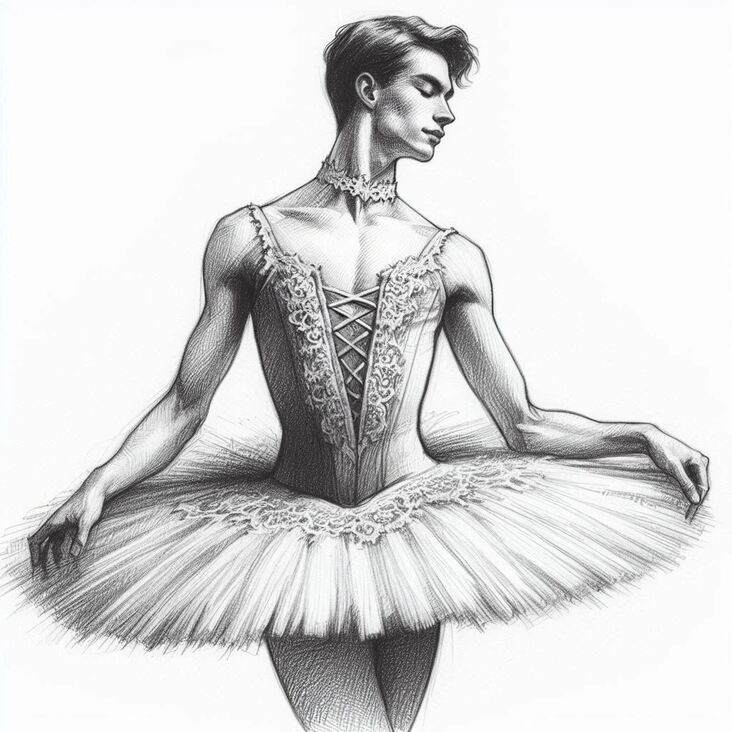
Hello darlings! It’s your favourite tutu-wearing time traveller, Emma, back again with another tantalising tale from the world of ballet history! This week, we’re taking a trip back to the glorious year of 1839 – think elegant carriages, gas lamps casting their soft glow upon the streets, and…wait for it…the very first ballerinas sporting those gloriously billowing tutus we know and love today!
Now, picture this, my loves: a grand Parisian theatre. The air is thick with anticipation. Suddenly, a hush falls over the crowd as the curtain rises. A young dancer, clad in a billowing, white garment, leaps and twirls across the stage, the soft tulle catching the light like spun moonlight. That, my dears, is what we call the birth of the tutu.
As I've explained in my previous posts (and you can check out all those previous gems on www.pink-tutu.com, don’t forget!), the origins of ballet are a long and fascinating story, tracing back through the centuries to the Renaissance court. And while graceful movement and lovely dance outfits were always part of the scene, there were a few essential changes in the 1830s that ushered in the iconic tutu we see today.
Imagine that you’re an eager ballet dancer, just beginning to study this wondrous art form! But as a lady, it can be a bit restrictive with your outfit. You’re all corseted and roped into heavy gowns that only restrict your movements! How could you express the magic of dancing and leaping?
This was precisely the issue that ballet dancer, Marie Taglioni, a woman I deeply admire, faced! With a burst of artistic genius and a love for lightness and freedom of movement, Marie’s dancing was captivating. Imagine being so light you seem to defy gravity with leaps that almost seem impossible! The elegant way she could move! It was breath-taking!
The challenge was that her clothing was all too restrictive. It’s as if a lovely bud had been constrained by heavy flowerpot and couldn’t fully blossom! In order to make her moves more fluid and express her artistic vision, Marie needed a new outfit. The result? A groundbreaking creation for the time: the tutu, which changed how ballet dancing could be perceived and seen by audiences for all the centuries to come.
A true testament to her skill and artistic vision! She realised she needed to dance with more freedom, to move effortlessly on stage. It needed to be both comfortable, but also have a light, delicate look, and importantly – be so easy and light to move in that the dancers could finally express all their talents, especially in their leaps.
Marie Taglioni was known as La Sylphide, in fact the name of her most iconic ballet performance. I feel sure we can all appreciate a name like this! She could have a wonderful and glamorous outfit for the stage and this is where the tutu truly began to grow and flourish in popularity! The dance performance made her famous, both for her daring leaps and the lightness of the outfit she chose.
Think of it, dears, as an explosion of creativity and a leap into a new chapter for ballet fashion. The shorter, billowing skirts allowed dancers to showcase their breathtaking moves with unmatched elegance and grace. These days we get to appreciate ballet and dancers’ agility with even shorter skirts, and now we can appreciate the tutus with lots of colours! But I will always remember Marie Taglioni who created that wonderful start for all of us to dance with such elegance.
Imagine, my dear, the excitement this sparked in the Parisian audience in 1839! It was truly revolutionary, a whole new visual way to experience ballet. And of course, it took this stunning movement to a whole new level of elegant drama. And to top it off, those graceful tulle layers caught the theatre lights like stars in a summer sky. Talk about beautiful. Now, who could ever resist this lovely and inspiring story?
I truly admire how tutus helped shape how people watched ballet, and I have to add the tutu to my list of all-time favourite pieces of clothing! So graceful and beautiful! The ballet industry would not be the same without it.
I must say that on this very day in 1839, I was so fortunate to be at that famous opera house in Paris. I watched in absolute awe and admiration as those beautiful dancers soared across the stage. In fact, I saw Marie Taglioni herself on that stage! It is something that has really stayed with me in time. The thrill of being part of such a wonderful evening will always be with me! If I was travelling to Derbyshire then I can tell you that, in 1839, no one was sporting a tutu in that small area in Derbyshire where I grew up! Perhaps I’ll pop back sometime and start a trend!
Even now, with all the gorgeous outfits and colours to choose from, I feel that the tutu is such an enduring and stylish garment and one of the most beautiful dance costumes of all time!
Of course, darling, this isn’t where our story ends! The evolution of the tutu continued to develop in the late nineteenth and early twentieth centuries with many more designers coming into play. You just wait until you hear about the next fabulous development in this amazing costume!
I’m off now to find the next best tutu on my travels and who knows what next adventure will present itself on the time travel calendar. But as for you, I hope you have an absolutely wonderful and tutu-filled week! 🩰 Don’t forget to spread the love for all things ballet, especially that fabulous tutu! See you all next #TutuTuesday! 👋 💕

